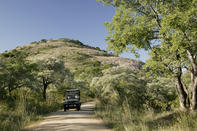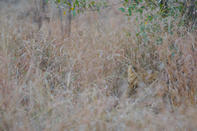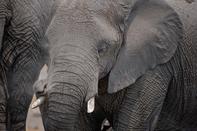Drive Right
The Kruger National Park has strict speed limits: 50 kmph on tar roads and 40 kmph on gravel roads. It would be foolish to exceed these limits for a number of reasons: you won’t see any game if you travel at speed; you’ll annoy your fellow game spotters; it’s dangerous for the animals; it’s disruptive; it’s noisy; it’s dusty, etc.

You will also get a heavy fine if you exceed the specified speed limits and, yes, there are speed traps inside the Kruger National Park. As a general rule of thumb, plan on covering no more than 25 km in an hour of driving, and this does not include any long stops. So, don’t be too ambitious. Private vehicles are not allowed to drive through the park after sunset and before sunrise. To enforce this rule, entrance gates and rest camp gates both have fixed opening and closing times and these are not negotiable.
Heavy fines will be imposed on those people who miss the gate closing times, so make sure you plan your day carefully and don’t get caught too far away from your home gate when the sun starts to set. If you are late and have to drive fast to reach the gate in time, you will probably be fined for speeding.
Gate times correspond with sunrise and sunset and therefore shift with the seasons (between 04:30 and 06:00 in the morning, and between 17:30 and 18:30 in the evenings). And, if you are late, don’t think that you’ll be able to talk your way out of it. The guards at the gates are not pushovers, and they have their orders.
Kruger Culture

Most rest camps have a spotting board, which pinpoints the locations where specific species have been spotted in the last day or two. Take a look at this board, usually in the reception area, to improve your game spotting strike rate. You can also ask the rangers and other guests that you meet along the way for additional leads. And be patient. Sometimes waiting at a watering hole for a couple of hours is a better strategy than driving around like a lunatic, searching for a lion.
Of course, luck also plays a big role in the process as there are simply no guarantees when it comes to wild animals. You should also take along a couple of game spotting guides so that you can identify what you are looking at! No person is an island, and the Kruger National Park authorities want to encourage their guests to reach out to one another and share their experiences.
So, do simple things such as waving to cars that you pass on the road; pass on information to fellow visitors about what you’ve spotted and where; participate in campfire discussions; and share your knowledge and experiences with others. Collaborating with other tourists will definitely enhance your appreciation of the park.
Getting the Wild Card

If you are planning to spend a few days in the park, it may be worthwhile buying a SANParks Wild Card. This is a very effective loyalty programme whereby, in exchange for a single annual fee, Wild Card holders do not pay any daily conservation fees at selected SANParks, Ezemvelo KZN Wildlife, Msinsi, CapeNature and Swaziland’s Big Game Parks’ reserves – depending on which ‘cluster’ you buy. You can also get cards for individuals, couples, families or international guests.
By David Fleminger There is a wide variety of accommodation in Kruger National Park options ranging from rest camps to luxury Kruger Park safari lodges....
There is a wide variety of accommodation in Kruger National Park options ranging from rest camps to luxury Kruger Park safari lodges.... Driving the length of the Kruger National Park offers some of the best wildlife viewing in Africa. The park has incredibly diverse fauna and...
Driving the length of the Kruger National Park offers some of the best wildlife viewing in Africa. The park has incredibly diverse fauna and...